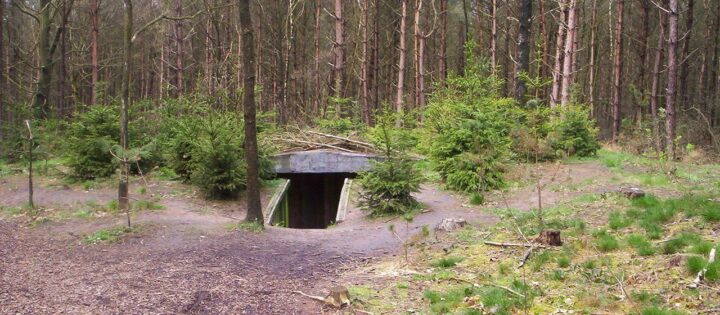War and peace on the Hondsrug
At least since medieval times the Hondsrug ridge was an important gateway into the Northern Netherlands, in particular to the politically and economically powerful city and lands of Groningen. The vast peat bogs bordering Drenthe could only be crossed in a few places. To control these crossings, various defensive works were constructed: castles, dykes, entrenchments and fortifications. Among these are the strongholds of Coevorden and Bourtange.

Fortress Coevorden
Coevorden was the most important military stronghold in Drenthe. Situated on a narrow passage between moors and brooks, it controlled the entry to the Northern Netherlands from the southeast. Over the centuries, many battles were fought for the control of Coevorden with its castle and the access to the North. Most famously, it was captured by Bommen Berend, Bishop of Munster, on his way to Groningen.
Once Coevorden was conquered, the road to Groningen was free and open, either via the Hondsrug, or the more westerly ridge of Sleen and Rolde. Travelers but also armies could move through Drenthe, murdering and pillaging the rural population. Coevorden was besieged and sacked for the last time in 1672 by ‘Bommen Berend’ (Bombing Berend), the bishop of Munster who invaded the Northern Netherlands. In museum ‘Het Arsenaal’ in Coevorden the story of warfare in the region is told.

The city of Groningen
The city of Groningen originated on the northern tip of the Hondsrug. Already in prehistoric times this was the only land connection between the Hondsrug area to the south and the rich coastal settlements of Friesland and Groningen. On either side of the Hondrug access was forbidden by the impenetrable peat bogs. Due to this strategic position Groningen became the most powerful city in the Northern Netherlands.
Traders and armies used the Hondsrug as access to Groningen, so already in the 11th the city fortified itself with walls and gates, so it could defend itself agains marauding invaders. The most well-known siege was that by Bernhard von Galen, Bishop of Munster, in 1672. The successful defense against Bommen Berend is still celebrated yearly.

Other remnants of strife
To protect Drenthe from invaders, entrenchments and defensive dykes were constructed at strategic places, usually passages through the inaccessible moors. Water levels were controlled to keep the low-lying areas flooded and impassable in times of crisis. A well preserved entrenchment is the Katshaar fortification near Coevorden. Only the faintest traces are detectable of the Bolwerk near Glimmen, a circular fortification from the 13th century.
After the defeat of the invading Bommen Berend in 1672, a long and quiet period started, only briefly interrupted by French, English and Cossack troops in the early 19th century. This quiet period lasted until the Second World War. Traces of all these defensive works can be found as Geopark hotspots throughout the Hondsrug area.

The Second World War
Many stories center around the Second World War, when the Hondsrug again played an important role in the retreat and advance of armies. At the start of the war the Hondsrug was part of the defensive lines designed to stop the invading German armies. Some gun emplacements can still be found. Other traces from the 2nd world war comprise camp sites, bomb craters, hide-outs, anti-tank ditches and trenches.

For the Allied Forces the Hondsrug was an important route in their battle to defeat the German occupants. Many small memorials commemorate the numerous small and often cruel events that took place in this decisive period. The most important of them can be found as hotspots in the Geopark
Deportation Camp Westerbork
Of special significance is the former concentration camp of Westerbork, only just outside of the Hondsrug Geopark. From this camp thousands of Jews and other unwanted people were put on transport by the Nazis.







